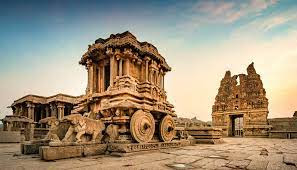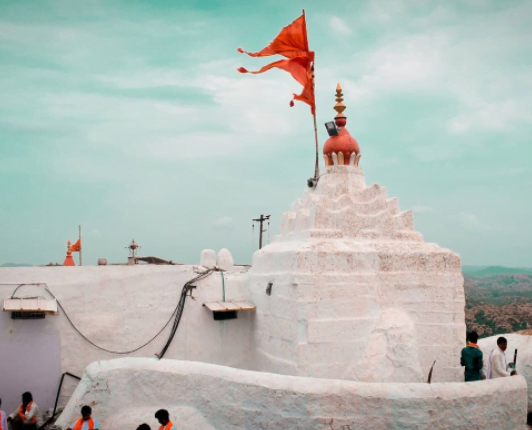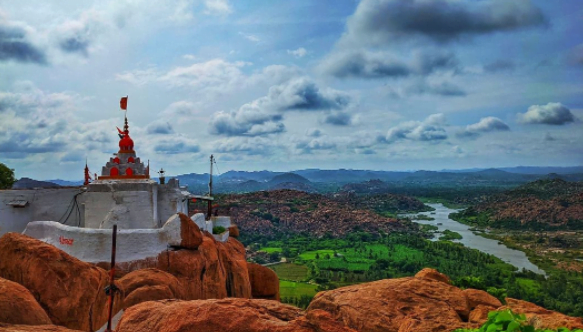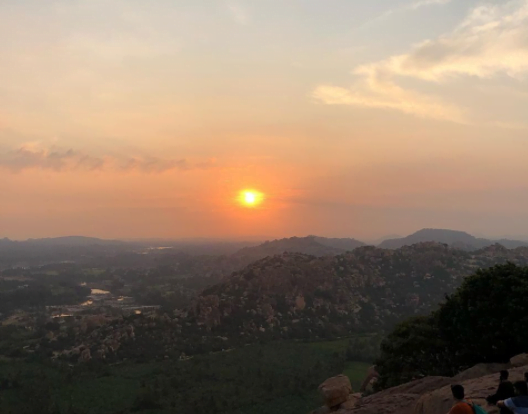You might have visited Hampi once, right? But did you know that Lord Hanuman was born at a distance of 5kms from the historical sites of Hampi at Anjanadri Betta! This region in Karnataka is an essential aspect of the Indian epic Ramayana.
Lord Hanuman was a great example of a true devotee. An inspirational character for each and everyone associated with the Hindu religion. Lord Hanuman is a representative when it comes to strength and courage. Here are a few interesting facts about Parvatha.
6 Lesser-Known Facts About Anjanadri Betta
1. Birthplace of the Super Hero – Anjanadri Betta
According to Hindu Dharma, Lord Hanuman was born to Anjana Devi, and thus Hanuman was also called Anjaneya, and his birthplace Anjanadri (Anjana’s Hill).The Anjanadri Parvatha in Hampi, Vijayanagara District, lies in the centre of the Anegundi. According to the mythology, Anegundi was a part of the Kishkinda region. The Monkey Kingdom.
According to Hindu mythology, Hanumanta was born on this holy hill.
2. The Idol of Anjani Putra
On top of the Anjanadri Betta is a temple dedicated to Lord Hanuman, which sits on the hill’s edge. The Hanuman idol is carved out of a rock. In addition, there are also shrines of Lord Rama and his wife Sita and Anjana Devi temple in the same vicinity.
A white-washed structure with a pyramid structure and a small red dome at the top covers the idol of Hanumanta.
3. Unbelievable Nature’s Wonder
As you climb the 575 steps towards the top of the hill, one can see the ancient ruins of Hampi. At a certain point, we can come across a unique stone monument which takes the shape of Lord Hanuman’s face. This natural formation of the stone is itself a miracle, among many others.
4. The View of Rishyamukha Hill
As you walk around the hilltop, you can feel the refreshing cool breeze and see beautiful sights of green fields, the Tungabhadra River, parts of hampi, and the Rishyamukha hill. People believe this place is prominent in the Ramayana. In this place, Lord Hanuman will meet Lord Rama, who will be in search of Sita.
5. The Sacred Stone at the Temple
The temple premises on top of the hill have a floating stone which was used to construct the Ram Setu bridge.
6. Anjanadri Betta Scenic Sunset Point
Want to experience the fantastic sunset in the UNESCO recognized World Heritage Site – Hampi. Head to these scenic spots – Anjanadri Betta, Matanga Hill, and Hemakuta Parvatha.
From AnjaNadri Hill, behind the temple, a few steps lead to experience the full 360-degree view of the incredible architecture and other ruins from ancient India scattered there. People commonly come here during the evening hours to catch a glimpse of the orangish colors in the sky during the sunsets, which are beautiful to stare at, and it’s mesmerizing. So, this time, your sole purpose of visiting the Heritage site Hampi should be Anjanadri Betta, to take the blessings of Lord Hanuman and to experience the divinity at the top of the hill.






.jpg)

.jpg)



.jpg)
